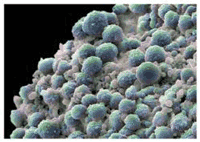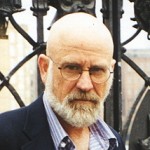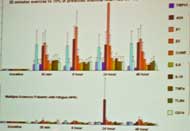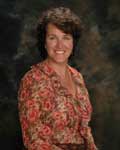Discuss this article on the forums
EVENTS
- Biggest Event – what else? XMRV takes the spotlight as no research finding has
 before, retrovirologists across the world clamor for samples, worry mounts about a tainted blood supply, Hilary Johnson blows into the New York Times Op Ed section, and patients gasp and cross their fingers in hopes that it will all work out. See XMRV Information Center
before, retrovirologists across the world clamor for samples, worry mounts about a tainted blood supply, Hilary Johnson blows into the New York Times Op Ed section, and patients gasp and cross their fingers in hopes that it will all work out. See XMRV Information Center - Most Surprising Event – Demonstrating that it can, in fact, be done, Mike Dessin’s near complete recovery from near death, after using a novel treatment approach manages to trump even XMRV as the most sheerly shocking event of the year.
XMRV
- Smartest and Luckiest Research Team – WPI researchers gloam onto XMRV shortly before their reason for doing so, the RNase L dysfunction present, is disproven as a factor in XMRV associated prostate cancers. Preliminary results suggest RNase L plays no role in XMRV infection in ME/CFS. For once the chronic fatigue syndrome community gets lucky.
- Biggest Disappointment – A month or so after rumors begin that XMRV is actually the DeFreitas retrovirus the WPI announces that it is not, temporarily deflating an entire community with visions of retribution for years of suffering, lawsuits, and the federal research community with eggs, tomatoes, dirt clods and all manners of other unfortunate substances on its face.
 Best Stand Taken – the Whittemore Peterson Institute goes toe to toe with the most prestigious research journal in the world as they refuse to give into Science’s demands that ‘CFS’ not be mentioned in the XMRV paper.
Best Stand Taken – the Whittemore Peterson Institute goes toe to toe with the most prestigious research journal in the world as they refuse to give into Science’s demands that ‘CFS’ not be mentioned in the XMRV paper.- Least Enthusiastic Response to XMRV – the CFIDS Association gets the facts right but misses on the enthusiasm part as patients hammer the organization for their rather tepid response to the most exciting event in ME/CFS history. A besieged organization goes on to apologize. Meanwhile their Science Director service Dr. Vernon joins Dr. Mikovits and others on the DHHS panel to oversee the federal research effort on XMRV.
- Poorest Response to the XMRV finding – Dr. Hyde and Dr. Marshall all blast the XMRV finding but Dr. Hyde takes the prize for inferring that it’s really all about the money.
The Feds, CDC and NIH
- Most Typical Federal Response – after years of expecting little or nothing from the NIH on CFS the NIH representative on CFS – Dr. Eleanor Hanna – once again delivers little or nothing. When asked what the CFS Research program is doing about XMRV now she replies they are working on the 2011 budget.
- Best Indication That the Dysfunction in the NIH program Rivals That of the CDC – occurs when the CFIDS Association tries to take advantage of the Obama Stimulus Package only to find that the only NIH employee working on CFS, Dr. Hanna, has not gone to the trouble to create a category for them. – See Teflon Woman
- Most Unprofessional Behavior – hardly has the ink began to dry on the XMRV Science paper before Dr. Reeves states he doesn’t think that the CDC (a lead agency in the effort to find the virus) will find it. He also manages to take Science to task for publishing what he feels was an unworthy papreeveser. If listening closely one can almost hear CDC administrators grind their teeth the as their chief CFS researcher somehow does it again.

- Quickest Promise Reneged On – after committing the CDC to more collaboration and more interaction with the research community in May Dr. Reeves scotches a promised International meeting that summer and then refuses to send any of his researchers to the three-day CFS researcher brainstorming session at Banbury.
- Most Inadequate Response – after the CAA documents the CDC spent millions of dollars simply enrolling patients into a study, and the IACFS/ME and CFSAC call for new leadership and a revamped program, the CDC responds by……..not responding – – – leading patients to conclude that either they’re a) extremely arrogant b) don’t really care or c) simply don’t know what to say, (or all three.)
- Most Out of Touch Response – the CDC publicly blames the CFIDS Association of America for engineering the virulent anti-CDC messages at the public review session for the CDC’s five year plan suggesting that if it was not for the CAA’s efforts all would be simply rosy.
- Most Inexplicable Research Project – after years of ignoring CBT and after many studies on the subject have been done, the CDC inexplicably decides to do its own CBT study.
Advocacy
- Best New ME/CFS Spokesman – Dr. Donnica Moore, the mother of a child with CFS, proves to be an articulate spokesman for the disease when she appears on Good Morning America and the Dr. Oz show. The CFIDS Association of America nominates her for a spot on the federal advisory committee on CFS (the CFSAC).
- Most Effective Editorial – in a stunning event Hillary Johnson’s editorial on CFS, XMRV and the CDC dominates the op-ed page of the New York Times
- Most Unlikely Friend – the ME/CFS Community finds a sometimes stern but powerful friend in Dr. Wanda Jones as she takes over leadership of the CFSAC Committee. Dr. Jones helps organize a sometimes unruly committee, starts videotaping the meetings and then, in a coup de grace, at the last minute corrals the top retrovirologist in the country (Dr. Coffin) and moves the next session to the big room where three cameras capture, in vivid video, Dr. Peterson, Dr. Coffin , Annette Whittemore and others, speak on XMRV.
- Most Graceful Move – With Dr. Wanda Jones and Annette Whittemore going to toe to toe over whether Annette should be allowed to speak, Dr. Oleske, the CFSAC chair, states he will take the consequences of shattering the federal rules of order and gives Annette permission to speak.
- Most Mangled Association – Hillary Johnson proclaims “the CDC is the CAA : The CAA is the CDC” after the CAA uses its congressional contacts to expose financial misconduct at the agency, calls for new leadership, and for the CFS effort to be moved to an entirely new part of the agency.
- Second Most Mangled Association – Hillary Johnson asserts that with the arrival of former CDC lab chief, Dr. Suzanne Vernon, at the CFIDS Association, that ‘CDC and CAA DNA’ have become intertwined. Meanwhile Dr. Vernon accepts the OFFER Research Excellence Award to a standing ovation, goes on to produce a research program that bears no resemblance to the CDC’s research program, and begins to build an International Research Network. She also joins the board of the IACFS/ME – thus intermingling her DNA there as well.
- Best Return From the Dead – after many years of playing little role in the major issues confronting the ME/CFS Research Community the IACFS/ME snaps to life under the directorship of Dr. Fred Freidberg, as it vigorously argues for new leadership and major changes at the CDC.
- Most Damaging Document – The four members of the External Review Panel turn in a mostly positive review of the CDC program thus scotching the CFIDS Associations efforts for major change. The CDC demonstrates its objectivity in the matter by never referring to the damaging findings from the CFIDS Association extensive report report while hailing the External Review Committee’s report at every turn.
- Worst Timing: the IACFS/ME and CFSAC forcefully insert themselves into the action regarding the CDC but miss their opportunity to present a united force with the CAA six months earlier. With the CDC inoculated against change by the External Review Report the agency continues on with business as usual.
- Biggest Wrench Thrown into a Project – after a complete Web redesign and a celebrity spokesman lined up and just weeks before the Fair Name Campaign is due to relaunch its effort to change the name of this disorder to ME/CFS, XMRV and XAND shows up, throwing the campaign into turmoil.
Research
- Most Out of the Blue Finding – Dr. Light draws gasps at the IACFS/ME Conference in Reno
 as he presents findings suggesting that the receptors that track muscle damage in the body are WAY, WAY over-activated in ME/CFS patients. He proposes that the fatigue, pain, etc. in ME/CFS are due to the central nervous system messages mistakenly telling the body to shut down to prevent more muscle damage.
as he presents findings suggesting that the receptors that track muscle damage in the body are WAY, WAY over-activated in ME/CFS patients. He proposes that the fatigue, pain, etc. in ME/CFS are due to the central nervous system messages mistakenly telling the body to shut down to prevent more muscle damage. - Worst Research Finding – WPI researchers document a lymphoma outbreak in Dr. Peterson’s patients offering a sad coda to decades of suffering by Incline Village and other residents. Demonstrating once again that very small numbers of people with the right kind of illness trump very large numbers of people with the wrong kind of illness, the National Cancer Institute jumps on board, starting the process that ultimately leads to the discovery of XMRV.
- Biggest ‘Big Picture’ Attempt – Proving once again that she really is a big picture type of person D
 r. Suzanne Vernon and the CFIDS Association start the beginnings of an International Research Network focused on collaboration, sample sharing, data sharing, a secure Researcher Wiki and a standardized testing approach.
r. Suzanne Vernon and the CFIDS Association start the beginnings of an International Research Network focused on collaboration, sample sharing, data sharing, a secure Researcher Wiki and a standardized testing approach. - Most Amazing Effort by a Layman – Marian Lemle, the mother of a child with ME/CFS, bursts into the prominence after Dr. De Meirleir proclaims that her hydrogen sulfide theory explains ME/CFS!
- Best Homecoming – after over 25 years and just 6 months before the WPI Institute announces the biggest find in ME/CFS in decades the ME/CFS Community ‘comes home’ to the place that put CFS on the map in the 1980’s. With Incline Village just a drive away the Reno IACFS/ME Conference, fittingly features, at times, an emotional Dr. Peterson and the Whittemore’s.
- Best Brainstorming Opportunity – the CFIDS Association and the NIH join forces to get 35 researchers together for three days of intimate discussion about ME/CFS at the Banbury Conference Center. With about a third new to CFS Dr. Suzanne Vernon fulfills her promise to bring new faces into the field.
- Biggest Opportunity Missed – A charity fundraiser apparently precludes anybody from the Whittemore Peterson Institute from attending the three day researcher brainstorming session at the Banbury Conference thus nixing an opportunity for CFS researchers to get an early jump on the XMRV action
Treatment
- Best New Treatment – Dr. John Chia dumps the sometimes toxic drug Interferon in favor of Oxymatrine, a Chinese herb that has antiviral and other properties, and reports better results. He begins offering a pure form of it from China.
- Most Creative New Treatment – the always interesting Dr. Cheney digs into malaria treatments to find Artesunate, a drug that has both redox and antiviral properties. He claims Artesunate has increased his treatment efficacy greatly.
- Most Abrupt Treatment Turnaround – after examining the results of his ‘event terrain’ scans of his echocardiograph Dr. Cheney proclaims that whey protein powder, D-Ribose, omega-3 fatty acids, methylation supplements and other commonly used supplements are actually harmful to ME/CFS patients.
- Best Patient Treatment Trial – 130 people in the New Day Group on the Phoenix Rising Forums watch five patients as they undergo the treatment that returned Mike Dessin to health
Internet
- Most (Predictably) Disappointing New Website – after tantalizing an always information hungry ME/CFS community about his new website and newsletter for months Dr. Cheney ends up charging a hefty enough fee that only the wealthier amongst us (once again) will benefit.
- Best New Information Source – For those that can afford it Dr. Cheney delivers the goods providing tantalizing articles on a variety of topics.
- Strongest Year on the Internet – the ME/CFS Community makes its best use of the Internet yet with patients flocking to join new Facebook sites by the CFIDS Association and the Whittemore Peterson Institute, with ME/CFSCommunity and the Phoenix Rising Forums growing by leaps and bounds and with numerous bloggers entering the field.

 before, retrovirologists across the world clamor for samples, worry mounts about a tainted blood supply, Hilary Johnson blows into the New York Times Op Ed section, and patients gasp and cross their fingers in hopes that it will all work out. See XMRV Information Center
before, retrovirologists across the world clamor for samples, worry mounts about a tainted blood supply, Hilary Johnson blows into the New York Times Op Ed section, and patients gasp and cross their fingers in hopes that it will all work out. See XMRV Information Center Best Stand Taken – the Whittemore Peterson Institute goes toe to toe with the most prestigious research journal in the world as they refuse to give into Science’s demands that ‘CFS’ not be mentioned in the XMRV paper.
Best Stand Taken – the Whittemore Peterson Institute goes toe to toe with the most prestigious research journal in the world as they refuse to give into Science’s demands that ‘CFS’ not be mentioned in the XMRV paper.
 as he presents findings suggesting that the receptors that track muscle damage in the body are WAY, WAY over-activated in ME/CFS patients. He proposes that the fatigue, pain, etc. in ME/CFS are due to the central nervous system messages mistakenly telling the body to shut down to prevent more muscle damage.
as he presents findings suggesting that the receptors that track muscle damage in the body are WAY, WAY over-activated in ME/CFS patients. He proposes that the fatigue, pain, etc. in ME/CFS are due to the central nervous system messages mistakenly telling the body to shut down to prevent more muscle damage. r. Suzanne Vernon
r. Suzanne Vernon